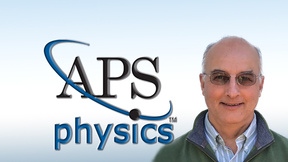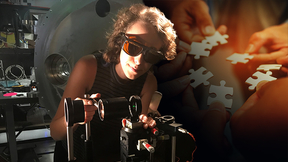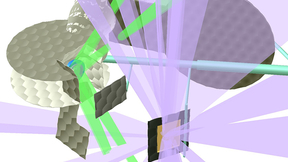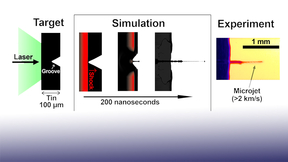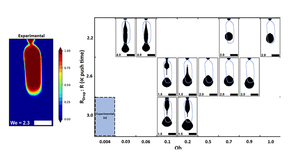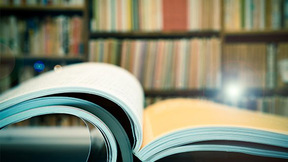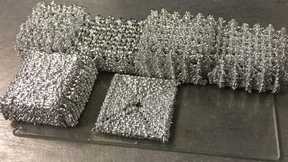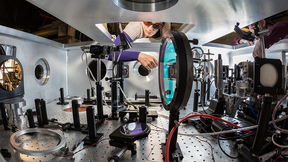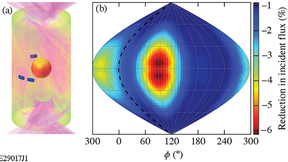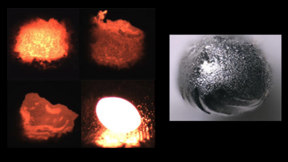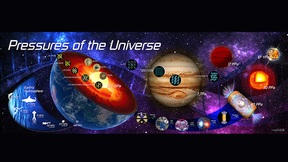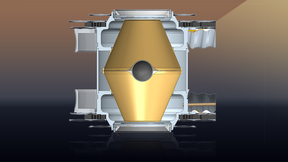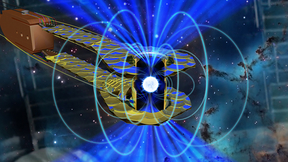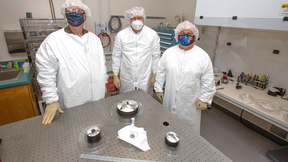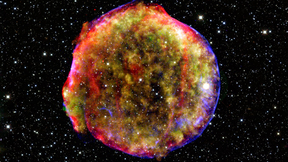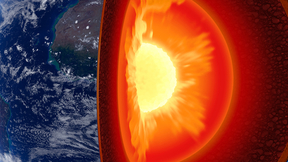Back
As an experimentalist at Lawrence Livermore National Laboratory (LLNL) developing diagnostics and experimental techniques in the field of dynamic high-pressure physics, Peter Celliers is on the path of leading a national topical group of the American Physical Society (APS). Celliers was recently elected to the executive committee as vice-chair of the American Physical…
With a focus on increasing joint research efforts between Lawrence Livermore National Laboratory (LLNL) and universities, the Lab’s Weapon Physics and Design (WPD) Academic Collaboration Team (ACT) University Program has awarded this year’s ACT-UP awards. Now in its second year, the ACT-UP awards were created to encourage and advance strategic partnerships among…
Lawrence Livermore National Laboratory (LLNL) researchers have developed an X-ray source that can diagnose temperature in experiments that probe conditions like those at the very center of planets. The new source will be used to perform extended X-ray absorption fine structure (EXAFS) experiments at the National Ignition Facility (NIF). The work was published in Applied…
When a shock wave travels through material and reaches a free surface, chunks of material can break away and fly off at high speeds. If there are any defects on the surface, the shock forms microjets that travel faster than a speeding bullet. Understanding how these microjets form and how they interact with material help to improve spacecraft shielding and understanding a…
A team of Lawrence Livermore National Laboratory (LLNL) scientists has simulated the droplet ejection process in an emerging metal 3D printing technique called “Liquid Metal Jetting” (LMJ), a critical aspect to the continued advancement of liquid metal printing technologies. In the paper, the team describes the simulating of metal droplets during LMJ, a novel process in…
Fifty-seven researchers from Lawrence Livermore National Laboratory (LLNL) were among the top 2 percent of the most cited researchers worldwide throughout their careers, according to research on metascience by Stanford University. Metascience is the "study of studies" using scientific methods. Stanford University professor John Loannidis worked alongside U.S.-based Kevin…
A novel additive manufacturing technique applies tiny droplets of molten metal layer by layer.
LaserNetUS, a network of facilities operating ultra-powerful lasers including those at Lawrence Livermore National Laboratory (LLNL), has received $18 million from the Department of Energy (DOE) for user support. Established in 2018 by DOE, LaserNetUS is organized and funded by DOE’s Office of Fusion Energy Sciences (FES). The new network was created to provide vastly…
Four Lawrence Livermore National Laboratory (LLNL) scientists have been selected as 2020 fellows of the American Physical Society (APS). The new fellows represent a selection of physics expertise, ranging from laser plasma physics to magnetic fusion plasmas, to theoretical and computational understanding of plasma interactions and soft X-ray and free electron laser…
Doctoral student Victor Baules is spending his summer exploring the connection between dark energy and the expansion of our universe, but due to the pandemic, his research fellowship is more down-to-earth, taking place from his home in Alabama. Baules’ research trajectory in high-energy theory aligns with astrophysics research at Lawrence Livermore National Laboratory …
Data correlating two factors that lead to implosion asymmetries have brought Lawrence Livermore National Laboratory (LLNL) scientists a step closer to understanding the gap between simulations and performance of inertial confinement fusion (ICF) experiments at the National Ignition Facility (NIF). These experiments aim to ignite a propagating fusion burn wave in deuterium…
Producing gram quantities of uranium metal in a controlled manner by traditional methods is challenging due to the complex chemistry of precursor material and extreme thermal requirements. In a recent study, LLNL researchers demonstrated a novel approach that combines modeling and an advanced experimental technique for extracting uranium from a uranium-containing compound…
High energy density (HED) scientists at Lawrence Livermore National Laboratory (LLNL) have helped launch a new National Science Foundation (NSF) effort to understand the physical and astrophysical properties of matter under pressures strong enough to change the structure of individual atoms. The Center for Matter at Atomic Pressures (CMAP) is hosted by the University of…
Initial NIF experiments using a full-scale version of the Frustraum hohlraum have produced nearly round inertial confinement fusion (ICF) implosions and more laser-induced energy absorption by the fuel-filled capsule. National Ignition Facility (NIF) researchers are optimistic that results from the initial tests of the novel angular-shaped hohlraum could create more…
Using the power of the National Ignition Facility (NIF), the world’s highest-energy laser system, researchers at Lawrence Livermore National Laboratory (LLNL) and an international team of collaborators have developed an experimental capability for measuring the basic properties of matter, such as the equation of state (EOS), at the highest pressures thus far achieved in a…
Lawrence Livermore National Laboratory (LLNL) and Tyvak Nano-Satellite Systems Inc. have reached a cooperative research and development agreement (CRADA) to develop innovative compact and robust telescopes for nanosatellites. The four-year, $2 million CRADA will combine LLNL’s Monolithic Telescope (MonoTele) technology with Tyvak’s expertise producing high-reliability…
In a paper recently published by Physical Review Letters, a team of researchers including scientists from Lawrence Livermore National Laboratory (LLNL) detail the first quantitative measurements of the magnetic field structure of plasma filamentation driven by the Weibel instability, using a novel optical Thompson scattering technique. These experiments study the processes…
When stars explode as supernovae, they produce shock waves so powerful they can blast streams of particles called cosmic rays into the universe at nearly the speed of light. Yet the exact mechanisms behind these phenomena remained mysteries for decades. Now, in experiments at the National Ignition Facility (NIF), an international team of scientists from institutions…
In response to the ongoing need for COVID-19 testing, Lawrence Livermore National Laboratory (LLNL) biologists are part of a collaborative research effort focused on improving the speed and accuracy of diagnostic tests, while enhancing the ability to adapt diagnostic tools as the virus evolves. Currently, the fastest way to identify known pathogens is by using a DNA-based…
Iron is the most stable and heaviest chemical element produced by nucleosynthesis in stars, making it the most abundant heavy element in the universe and in the interiors of Earth and other rocky planets. To get a better understanding of the high-pressure behavior of iron, a Lawrence Livermore National Laboratory (LLNL) physicist and international collaborators discovered…

